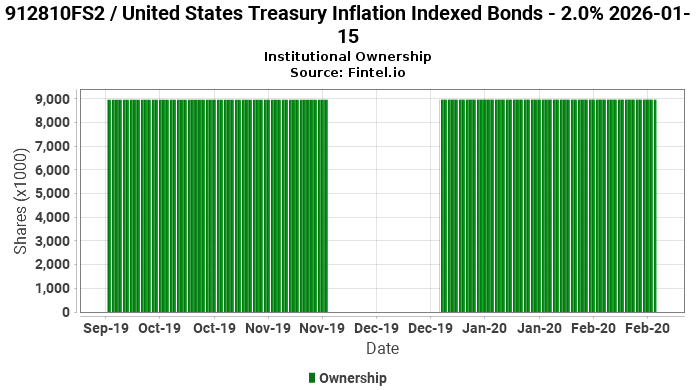However, kurtosis doesn’t affect the variance of the distribution. The result, 5.22 (the square root of 27.2), looks more like the right answer. So, in summary, the SD is the square root of the average of the squared deviations of each number from the mean of all the numbers, and it is expressed in the same units as the original measurement.
9 Except in Italy and Israel, where the number of parties is variable and equal to the total population. With a mean of 5.8, which is fairly similar to the trimmed mean of 6.0 and preserves the sample size. Similarly, the range of the 17 data points on the left difference between geometric mean and harmonic mean is 5, and their SD is 1.41. After adding that one discrepant value, the range shoots up to 42 and the SD up to 9.32. Just to pull things together, Figure 3–7 labels the various parts of a box plot. Notice that we’ve drawn it vertically rather than horizontally.
The extreme values in a series greatly affect the harmonic mean. If any term of the given series is 0 then this mean cannot be calculated. The geometric mean is used when the data set values have differing units. To find it, we divide the number of terms in a data series by the sum of all the reciprocal terms.
JEE Main & Advanced
3 One obvious way is to add up the total number of bedpans emptied by each group. For the first group, this comes to 3,083.4 Although we haven’t given you the data, the total for the second group is 4,583. This immediately tells us that the second group worked harder than the first . The Harmonic mean is calculated as n divided by reciprocals of rates . Below formulae is used for Harmonic mean H, n is the no. of observations.
- Evidently, the weighted arithmetic average overestimates the index, thus giving you incorrect information.
- To what degree are the statistics affected by outliers or extreme scores?
- We hope that the above article on Harmonic Mean is helpful for your understanding and exam preparations.
- H.M cannot be calculated if any of the details is zero.
- What we’ve done is to calculate the average number of bedpans emptied by each person.
Again drawing a large number of samples, how closely do the estimates cluster around the population value? Efficient statistics, like the SD, cluster more closely than does the range or IQR. The interquartile range is the difference between QL and QU and comprises the middle 50% of the data. A measure of central tendency is the “typical” value for the data. The number of subjects in the sample is represented by N. If there is only one group, take your pick and you’ll find someone who’ll support your choice.
Mode is the value which occurs most in a set of observations and around which the other items of the set cluster densely. It is defined to be size of the variable which occurs most frequently or the point of maximum frequency or the point of greatest density. In other words mode is that value of observation for which the height of the ordinate is maximum. Modal value of the distribution is that value of the variate for which frequency is maximum.
The Median
If the above sequence is in arithmetic progression, the mean of this sequence is calculated as Arithmetic Mean using the formula. Harmonic mean sees widespread use in geometry and music. It is also used to calculate the average of ratios as it equalizes all the data points.

If the sequence is in harmonic progression, the harmonic mean is computed by using the formula. The formula to determine harmonic mean is n / [1/x1 + 1/x2 + 1/x3 + … The harmonic mean is used when we want to find the reciprocal of the average of the reciprocal terms in a series. It can be used to determine the patterns in the Fibonacci series. An important property of harmonic mean is that without taking a common denominator it can be used to find multiplicative and divisor relationships between fractions.
Harmonic Mean Formulas
Harmonic mean is used to determine the price earnings ratio and other average multiples in Finance. It is also used in the computation of Fibonacci sequence. HM or Harmonic mean is one of the types of determining the average. The harmonic mean is computed by dividing the number of values in the sequence by the sum of reciprocals of the terms in the sequence. It can also be used to find the average of rates as it assigns equal weight to all data points in a sample. All items of the series are required to determine the harmonic mean.

These three means or averages are very important as they see widespread use in the field of geometry and music. If we are given a data series or a set of observations then the harmonic mean can be defined as the reciprocal of the average of the reciprocal terms. I.e., it is the reciprocal of the arithmetic mean of the reciprocals. The long lines coming out the sides are called whiskers.
Table of Content
If the given sequence is a geometric progression, the geometric mean of all the terms in the sequence is calculated using the formula. The harmonic mean has a rigid value and does not get affected by fluctuations in the sample however if the sample contains a zero term we cannot calculate it. Also, the formula to determine the harmonic mean can result in complex computations. Although the arithmetic mean is the most useful measure of central tendency, we saw that it’s less than ideal when the data aren’t normally distributed. In this section, we’ll touch on some variants of the mean and see how they get around the problem.
A lot of questions are asked based on this relation only.Let us check the relation between the two. Sum to n terms of Special Series https://1investing.in/ Table of contents… AskIITians offers comprehensive study material which covers all the important topics of IIT JEE Mathematics.
In statistics, there are three measures of central tendency. The mean can be further classified into arithmetic mean, geometric mean, and harmonic mean. If the data are symmetrically distributed around the mean, then the mean, median, and mode all have the same value, as in Figure 3–8. Quartiles are those values of the variate which divide the total frequency into four equal parts.
Relationship Between Arithmetic Mean and Geometric Mean: Types, Differences, and Solved Examples
Obviously there will be three such points Q1, Q2 and Q3 such that Q1≤ Q2 ≤ Q3 termedas the three quartiles. Q1is known as the lower or first quartile and is the value which has 25% of the items of the distribution below it and consequently 75 percent of the items are greater than it. Q3is known as the upper or third quartile and has 75percent of the observations below it and consequently 25 percent of the observations above it. The harmonic mean formula is a sort of average calculator that is estimated by dividing the number of utilities or values by the total of the reciprocals of each value of the data series. The harmonic mean serves to find multiplicative or divisor relations among fractions without worrying about common denominators. Harmonic means are often practised in averaging things.
This time, we’ll begin with nominal data and work through to interval and ratio data. If the median number occurs more than once , some purists calculate a median that is dependent on the number of values above and below the dividing line (e.g., there are two 7s below and one above). Not only is this a pain to figure out, but also the result rarely differs from our “impure” method by more than a few decimal places. The mean is the measure of central tendency for interval and ratio data. The various partition values viz., median, quartiles, deciles and percentiles can be located graphically with the help of curve called the cumulative frequency curve or ogive. Draw a perpendicular from the point of the two ogives i.e. more than ogive and less than ogive on the x-axis, the foot of the perpendicular gives the value of median.
Three numbers a, b and c are said to be in Geometric progression if i.e. if the ratio of the terms is same. This ratio of the terms is called the common ratio. Ans.5 The Geometric Mean or GM is the average value or mean which implies the central tendency of the set of numbers by using the root of the product of the values. The harmonic mean is largely used in situations dealing with quantitative data, such as finding the average of rates or ratios, due to the fact that it is not seriously affected by fluctuations. It has to be the harmonic mean of both 15 km/hr and 10km/hr as we have to find average across fixed distance which is expressed as a rate rather than average across fixed time. Harmonic mean is mainly used when we are dealing with the rate of change or average of rate is desired like average speed.


